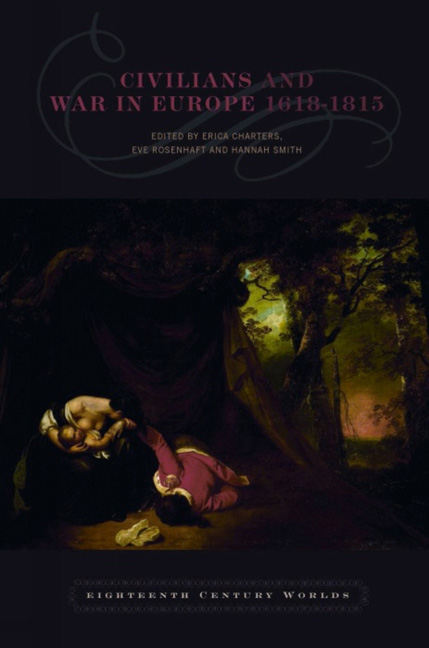Book contents
- Frontmatter
- Contents
- List of Contributors
- Acknowledgements
- List of Illustrations
- List of Abbreviations
- 1 Introduction
- Part I Suffering, Reconciliation and Values in the Seventeenth Century
- Part II The State, Soldiers and Civilians
- Part III Who is a Civilian? Who is a Soldier?
- 10 Conflicted Identities: Soldiers, Civilians and the Representation of War
- 11 ‘Turning Out for Twenty-Days Amusement’: The Militia in Georgian Satirical Prints
- 12 Insurgents and Counter-Insurgents between Military and Civil Society from the 1790s to 1815
- Part IV Contradictions of the French Revolutionary and Napoleonic Wars
- Bibliography
- Index
12 - Insurgents and Counter-Insurgents between Military and Civil Society from the 1790s to 1815
from Part III - Who is a Civilian? Who is a Soldier?
- Frontmatter
- Contents
- List of Contributors
- Acknowledgements
- List of Illustrations
- List of Abbreviations
- 1 Introduction
- Part I Suffering, Reconciliation and Values in the Seventeenth Century
- Part II The State, Soldiers and Civilians
- Part III Who is a Civilian? Who is a Soldier?
- 10 Conflicted Identities: Soldiers, Civilians and the Representation of War
- 11 ‘Turning Out for Twenty-Days Amusement’: The Militia in Georgian Satirical Prints
- 12 Insurgents and Counter-Insurgents between Military and Civil Society from the 1790s to 1815
- Part IV Contradictions of the French Revolutionary and Napoleonic Wars
- Bibliography
- Index
Summary
THE AMBIGUOUS place that insurgents and guerrillas occupied between military and civil society helps to explain the fear that they aroused in others and the threat that they posed to the Revolutionary and Imperial state. They were not without precedent in European warfare: indeed, until the seventeenth century the sovereigns of invaded countries would routinely order their subjects to attack approaching armies, while in China as early as the fourth century BC governments and their advisors were already studying the techniques of counter-insurgency warfare. In moments of danger partisan warfare was a natural form of defence, especially in those regions where mountain ranges and coastal marshes provided natural protection, from the sand dunes of Dunkirk to the rocky passes of the Alps, the Dolomites and the Apennines; all offered cover for local men who knew the terrain and were not constrained by the laws of conventional warfare. Insurgency and lawlessness were natural bedfellows in frontier regions, and those to whom local people turned for protection in wartime had often served their apprenticeship as bandits or smugglers, terrorising passing traders, slipping unseen across national frontiers or tax boundaries, and learning the essential survival kit for any outlaw – a sense of place in a poorly mapped landscape, a knowledge of the goatherds’ tracks that were unpatrolled at night, a feel for those in the local community who might denounce or betray them. They continued to behave in very much the same way once war was declared, associating with the bandits who infested the highways of Europe, especially southern Europe with its traditions of autonomy and factionalism, family honour and vengeance. Indeed, they saw little contradiction between the two careers, smugglers and bandits turning effort lessly into local freedom fighters. They often basked in the approval of their fellow villagers, whose liberties they defended; they also relished a freedom of their own, including the freedom to live on their own terms, outside the law. Under a variety of identities – as partisans and guerrillas, barbetti, miquelets and Schützen – they were a recognised part of the landscape right across the Mediterranean. All eighteenth-century armies, including the French, were prepared to use their services when circumstances demanded it.
- Type
- Chapter
- Information
- Civilians and War in Europe 1618–1815 , pp. 182 - 198Publisher: Liverpool University PressPrint publication year: 2012

